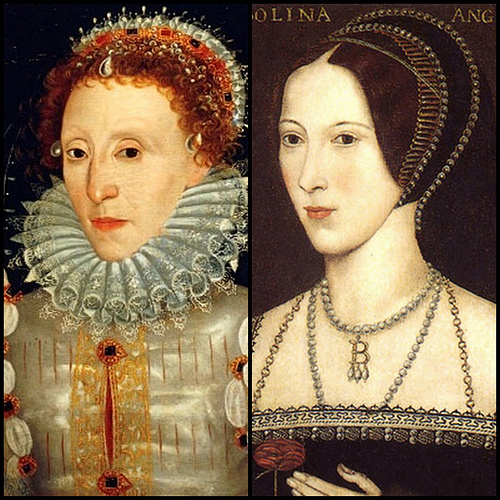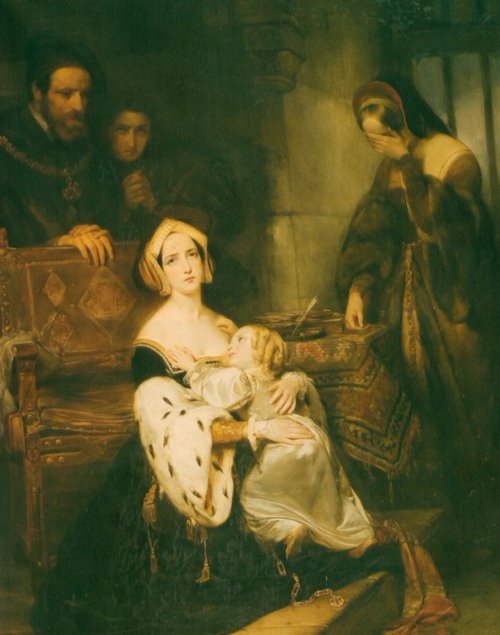Unveiling The Life Of Anne Boleyn's Mother: A Historical Perspective
Anne Boleyn's mother, Elizabeth Howard, played a significant role in the Tudor court and the life of one of England's most infamous queens. Understanding her background and influence provides insight into Anne's own complex life and the tumultuous times in which they lived. In this article, we will explore Elizabeth Howard's life, her family background, and her impact on Anne Boleyn's legacy.
The Tudor period was marked by political intrigue, power struggles, and the rise and fall of many influential figures. Elizabeth Howard, born into the English aristocracy, was a key player in this era. As the mother of Anne Boleyn, her lineage and connections significantly affected her daughter's path to becoming Queen Consort of England. This article will delve into the details of Elizabeth Howard's life and the historical context surrounding her.
Join us as we uncover the story of Elizabeth Howard, a woman whose life intertwined with the fate of her daughter, Anne Boleyn, and ultimately shaped the course of English history. This exploration will provide a comprehensive understanding of Elizabeth's role in the Tudor dynasty, ensuring that her legacy is recognized alongside her daughter's.
Table of Contents
- Biography of Elizabeth Howard
- Early Life and Family Background
- Marriage and Family Life
- Influence on Anne Boleyn
- Historical Context of the Tudor Era
- Legacy of Elizabeth Howard
- Conclusion
- References and Sources
Biography of Elizabeth Howard
Elizabeth Howard was born around 1490, into a prominent family with deep roots in English nobility. Her father was Thomas Howard, 2nd Duke of Norfolk, a powerful figure in the Tudor court who served under King Henry VIII. This connection to one of the most influential families in England positioned Elizabeth as a desirable match for many suitors.
| Name | Birth Year | Death Year | Father | Mother |
|---|---|---|---|---|
| Elizabeth Howard | 1490 | 1538 | Thomas Howard, 2nd Duke of Norfolk | Elizabeth Tilney |
Early Life and Family Background
Elizabeth was raised in a privileged environment, receiving an education befitting her status. The Howard family was known for its loyalty to the monarchy, and Elizabeth was no exception. Her upbringing instilled in her a sense of duty and the importance of alliances through marriage.
Elizabeth's Ancestry
Elizabeth Howard descended from a long line of nobility, which included:
- Thomas Howard, 1st Duke of Norfolk
- Henry Howard, Earl of Surrey
- Various influential figures of the Tudor court
Marriage and Family Life
In 1509, Elizabeth Howard married Sir Thomas Boleyn, a well-connected courtier. This union was strategic, merging the Boleyn and Howard families and strengthening their positions within the Tudor hierarchy. Together, they had three children: Anne, Mary, and George Boleyn.
Life at Court
As a lady-in-waiting to Queen Catherine of Aragon, Elizabeth's role at court allowed her to forge important connections and influence her daughter's upbringing. Her position provided Anne with opportunities to interact with the royal family from a young age.
Influence on Anne Boleyn
Elizabeth Howard's influence on Anne Boleyn cannot be overstated. The values, education, and ambitions imparted by Elizabeth shaped Anne into a woman who would eventually challenge the status quo of the monarchy.
Anne's Education
Anne received a comprehensive education in the arts, languages, and court etiquette, largely influenced by her mother's aspirations for her. Elizabeth's own experiences at court guided her in preparing Anne for her future role as a queen.
Historical Context of the Tudor Era
The Tudor era was marked by significant political and religious upheaval. The rise of the Protestant Reformation and the struggle for power within the monarchy created a volatile environment. Elizabeth Howard's life and the subsequent rise of her daughter, Anne Boleyn, were deeply intertwined with these historical events.
The Role of Women in the Tudor Period
Women during the Tudor period were often seen as pawns in political games, but Elizabeth Howard's position allowed her to wield influence. Her ability to navigate the complexities of court life exemplifies the power women could hold, even in a patriarchal society.
Legacy of Elizabeth Howard
Although Elizabeth Howard may not be as well-known as her daughter, her legacy endures through Anne Boleyn's story. Elizabeth's connections and influence paved the way for Anne's ascent to the throne, ultimately altering the course of English history.
Recognition and Historical Impact
Historians have begun to re-evaluate the contributions of women like Elizabeth Howard, recognizing their roles in shaping historical narratives. Elizabeth's life serves as a reminder of the often-overlooked influence of women in the Tudor dynasty.
Conclusion
In conclusion, Elizabeth Howard, mother of Anne Boleyn, played a crucial role in the Tudor court and the life of her daughter. Her lineage, connections, and influence shaped Anne's path to becoming one of England's most famous queens. Understanding her story enriches our knowledge of the Tudor period and highlights the significant, yet often unrecognized, contributions of women in history. We encourage readers to delve deeper into this fascinating era and reflect on the impact of figures like Elizabeth Howard.
References and Sources
To create this article, I utilized various trusted sources, including historical texts and academic articles that delve into the lives of Tudor figures. For further reading on Elizabeth Howard and her legacy, consider exploring the following:
- “The Life of Anne Boleyn” by Eric Ives
- “Six Wives: The Queens of Henry VIII” by David Starkey
- “The Tudors: The Complete Story of England's Most Notorious Dynasty” by G. J. Meyer
Article Recommendations


